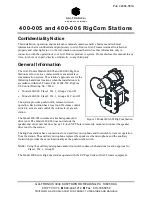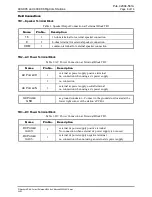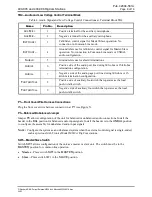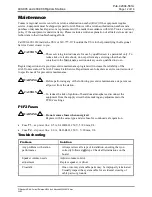
Pub. 42004-561A
400-005 and 400-006 RigCom Stations
Page 12 of 16
P:\Standard IOMs - Current Release\42004 Instr. Manuals\42004-561A.docx
04/22
Maintenance
Contact a regional service center for a return authorization number (RA#) if the equipment requires
service. Equipment must be shipped prepaid to GAI-Tronics with a return authorization number and a
purchase order number. Repairs or a replacement will be made in accordance with GAI-Tronics’ warranty
policy if the equipment is under warranty. Please include a written explanation of all defects to assist our
technicians in their troubleshooting efforts.
Call 800-492-1212 inside the USA or 610-777-1374 outside the USA for help identifying the Regional
Service Center closest to you.
CAUTION
—These servicing instructions are for use by qualified service personnel only. To
reduce risk of electric shock, do not perform any servicing other than that
contained in the Maintenance section unless you are qualified to do so.
Regular inspection and a good preventive maintenance program will increase the reliability of the
GAI-Tronics station. The GAI-Tronics Field Service Department can formulate a service contract suited
to specific needs for preventive maintenance.
WARNING
—Before performing any of the following preventive maintenance steps, remove
all power from the station.
CAUTION
—To reduce the risk of ignition of hazardous atmospheres, disconnect the
equipment from the supply circuit before making any adjustments to the
PCBA’s settings.
F1/F2 Fuses
WARNING
—
Do not remove fuses when energized.
Replace with the same type and size fuse for continued safe operation.
•
Fuse
F1
—ac power line: 0.5 A, SLO-BLO, 250 V, 5×20 mm, UL.
•
Fuse
F2
—dc power line: 2.0 A, SLO-BLO, 250 V, 5×20 mm, UL.
Troubleshooting
Problem
Solution
Any problem with station
performance
Always review all steps of installation, ensuring that you
correctly followed
all
steps. Check all terminations on the
board.
Speaker volume needs
adjustment
Adjust volume control.
Replace speaker or driver.
Crosstalk
One or more system cable pairs may be improperly terminated.
Visually inspect the system cable for accidental crossing of
cable pairs or grounds.




































